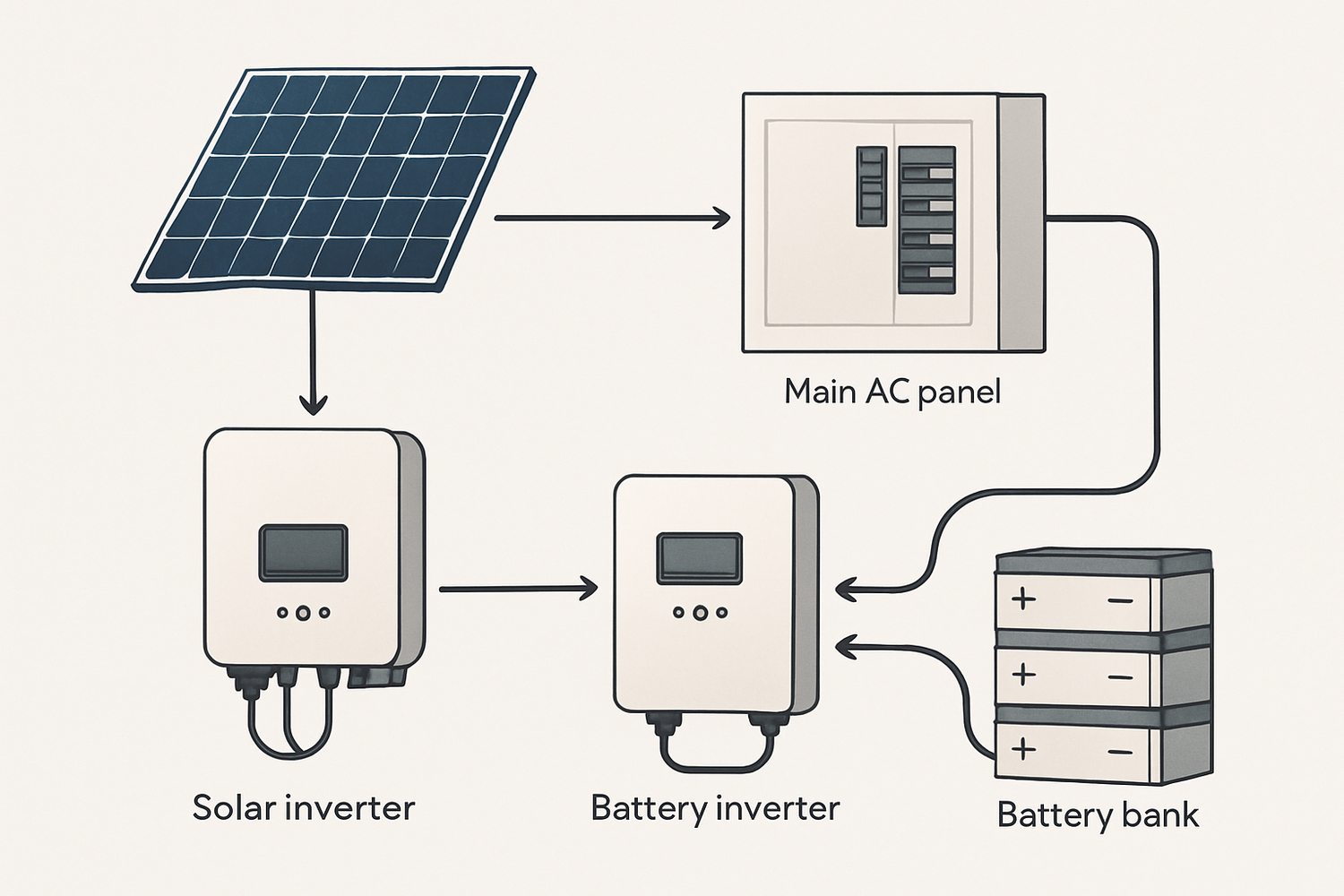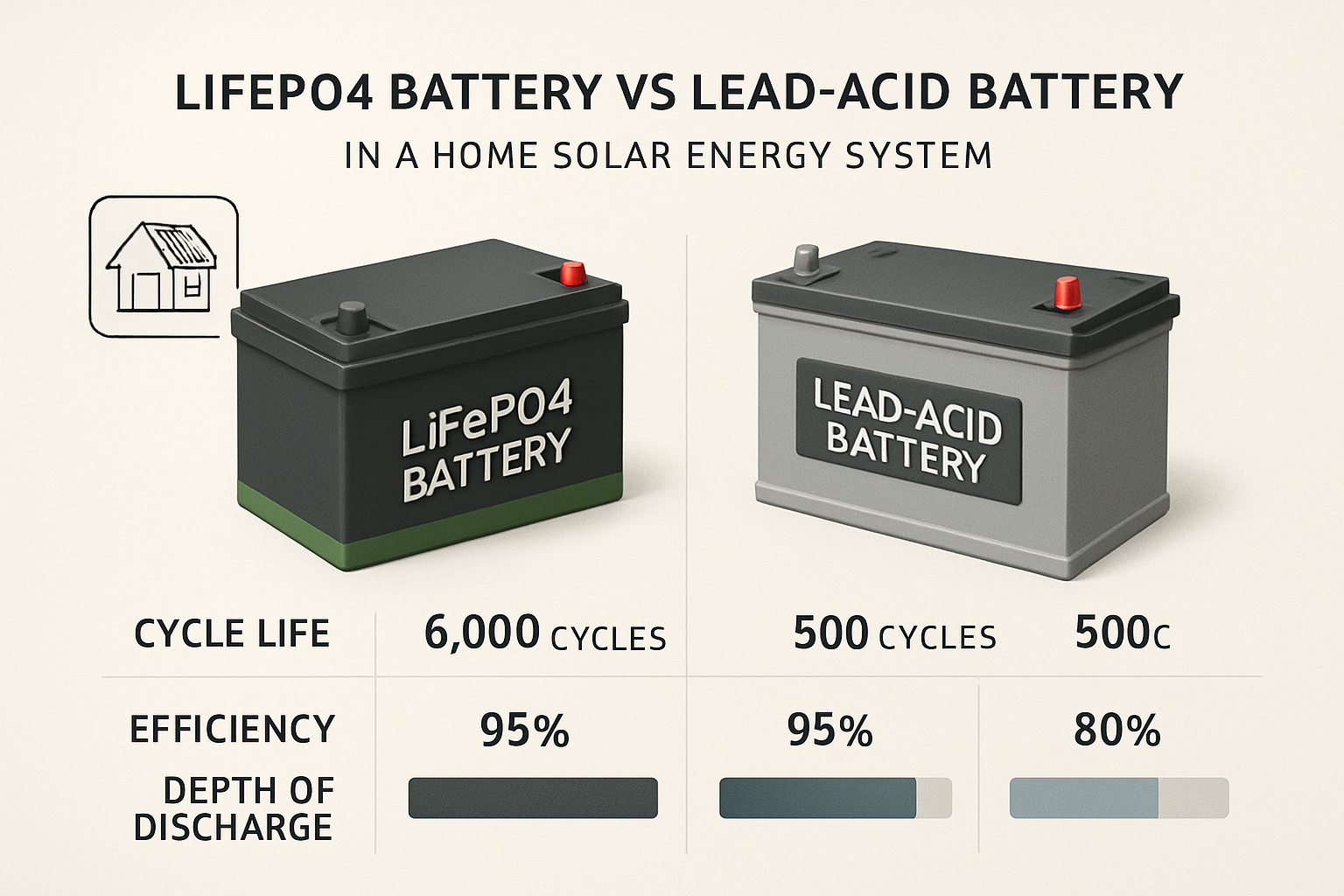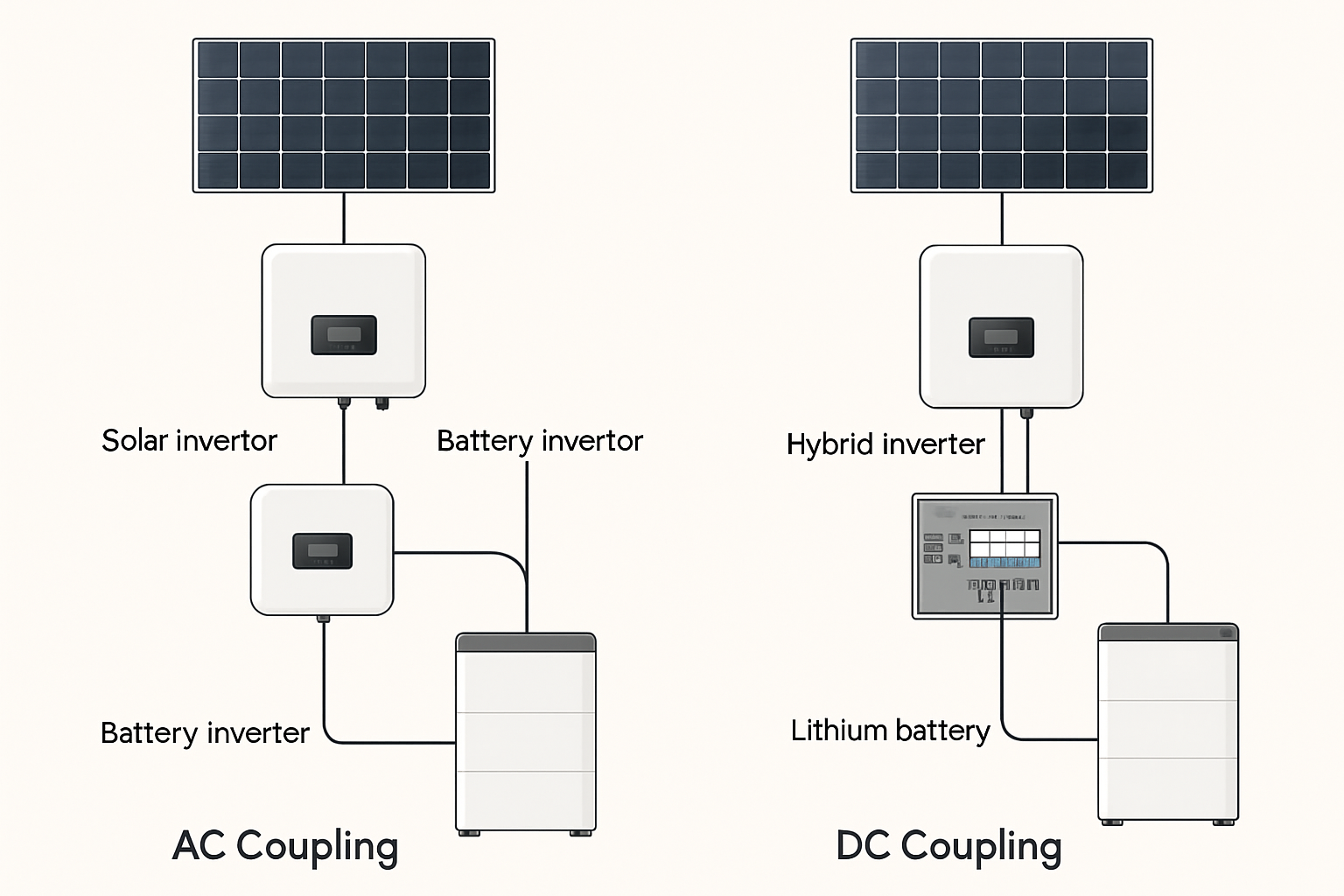Adding a home battery storage system to your solar installation is a significant step toward energy independence. It allows you to store excess solar energy for use at night or during power outages. When you decide to add storage, you face a fundamental architectural choice: a Retrofit AC-coupled system or a Native DC-coupled system. The best energy storage solution depends entirely on your specific circumstances, including whether you have an existing solar array.
Understanding the Core Concepts: AC vs. DC Power
To grasp the difference between these two storage solutions, it's important to know the two types of electricity involved. The distinction dictates how energy moves through your system.
What is DC Power?
Direct Current (DC) is the type of electricity generated by solar panels and stored in batteries. As the U.S. Department of Energy explains, DC electricity flows in a single, continuous direction. This is the native language of your solar panels and your energy storage.
What is AC Power?
Alternating Current (AC) is the standard form of electricity used by the power grid and most home appliances. Unlike DC, its direction reverses many times per second. This is the language of your home's electrical system.
The Role of the Inverter
An inverter is a critical device that converts DC electricity into AC electricity. In any solar-plus-storage setup, inverters manage the energy flow between panels, batteries, your home, and the grid. The type and number of inverters define the system's architecture.
Retrofit AC-Coupled Energy Storage
An AC-coupled system is often the go-to choice for adding battery storage to an existing solar panel installation. This approach 'couples' the battery to the AC side of your home's electrical system.
How It Works
In a retrofit AC-coupled setup, your solar panels connect to a solar inverter, which converts DC power to AC for your home. To add storage, a second, separate battery inverter is installed. To charge the battery, this inverter converts the AC power from your solar system back to DC. When you need to use the stored energy, it converts the battery's DC power back to AC for your appliances. This means the energy undergoes multiple conversions.
Advantages of AC-Coupling
The primary benefit of an AC-coupled system is its ease of installation when retrofitting an existing solar setup. Because it works alongside your current solar inverter, it avoids complex and costly rewiring. This modularity also means the solar panels and battery operate independently; if one component has an issue, the other can often continue to function.
Disadvantages of AC-Coupling
The main drawback is lower round-trip efficiency. Every time electricity is converted from DC to AC and back, a small amount of energy is lost. In an AC-coupled system, solar energy is converted three times before being used from the battery (DC-AC, AC-DC, DC-AC), resulting in efficiency ratings typically between 90-94%.
Native DC-Coupled Energy Storage
A Native DC-coupled system is designed to integrate solar and storage from the start. It is highly efficient and often the preferred choice for new installations.
How It Works
In a DC-coupled system, the DC power from the solar panels flows to a single, smart hybrid inverter. This hybrid inverter can simultaneously manage the DC power from the panels, charge the DC battery directly, and supply AC power to the home. The energy used to charge the battery only needs to be converted once (from DC to AC) when it's time to power your home appliances.
Advantages of DC-Coupling
Higher efficiency is the standout advantage. By minimizing power conversions, DC-coupled systems achieve a round-trip efficiency of up to 98%. This means more of the energy your panels generate makes it into the battery for later use. For new systems, using a single hybrid inverter instead of two separate inverters can also lead to lower hardware costs.
Disadvantages of DC-Coupling
Adding a DC-coupled battery to an existing solar installation can be complicated and expensive. It often requires replacing the original solar inverter with a compatible hybrid inverter, which may involve redesigning parts of the system. This makes it a less practical retrofit option in many cases.
Head-to-Head Comparison: AC vs. DC Energy Storage
Choosing the right system involves weighing their respective strengths. The best option depends on your starting point—a new installation or an existing one—and your priorities.
| Feature | Retrofit AC-Coupled System | Native DC-Coupled System |
|---|---|---|
| Round-Trip Efficiency | Lower (approx. 90-94%) due to multiple conversions | Higher (up to 98%) due to direct DC-to-DC charging |
| Best for New Systems | Can be used, but may be less efficient and more complex | Ideal, often simpler and more cost-effective |
| Best for Existing Systems | Ideal, simpler and more affordable to retrofit | Complex and costly to retrofit; often requires inverter replacement |
| System Components | Two inverters: one for solar, one for the battery | One hybrid inverter for both solar and battery |
| Backup Power | Provides reliable backup power | Provides reliable backup, sometimes with higher efficiency |
Efficiency is a critical factor in getting the most from your investment. For a comprehensive analysis of how to evaluate battery performance, including round-trip efficiency, you can consult this ultimate reference on solar storage performance.
Making the Right Choice for Your Home
Your decision on a retrofit AC vs. native DC energy storage comparison should be guided by practical considerations. Both technologies are proven and reliable when properly installed.
When to Choose a Retrofit AC System
An AC-coupled system is the logical choice if you already have a grid-tied solar panel system and want to add storage. Its compatibility with existing hardware makes the installation process smoother and more affordable. It is also a flexible option if the battery needs to be installed in a location far from the solar inverter.
When to Choose a Native DC System
If you are installing a new solar and battery system at the same time, a DC-coupled solution is generally superior. Its higher efficiency ensures you store and use as much of your solar energy as possible, maximizing your savings over the system's lifetime. It is also the standard for off-grid applications where every watt of energy counts.
Disclaimer: This information is for educational purposes only. It is not financial or legal advice. Please consult with a qualified professional installer to assess your specific needs and ensure compliance with local regulations.
Final Thoughts on Your Energy Future
The choice between AC-coupled and DC-coupled energy storage is not about which is universally better, but which is better for you. A retrofit AC solution offers a practical and cost-effective path to add storage to an existing solar array. A native DC solution provides superior efficiency for new, fully integrated systems. By understanding the key differences in installation, efficiency, and cost, you can make an informed decision that aligns with your energy independence goals.
Frequently Asked Questions
What is round-trip efficiency in a battery system?
Round-trip efficiency measures how much of the energy sent to a battery can be retrieved for use. For example, if you send 10 kWh of electricity to your battery and can later draw 9 kWh, the round-trip efficiency is 90%. Losses occur during the conversion of electricity from AC to DC and back. DC-coupled systems are more efficient because they involve fewer conversions to store solar power.
Can I add a DC-coupled battery to my existing solar panel system?
Yes, but it is often more complex and expensive than an AC-coupled retrofit. It typically requires replacing your current solar inverter with a hybrid inverter that can manage both the solar panels and the battery. An AC-coupled system is usually the more straightforward and affordable way to add a battery to an existing setup.
Is one system safer than the other?
Both AC-coupled and DC-coupled systems are safe when installed by qualified professionals following all electrical codes and manufacturer guidelines. The safety of a system is determined by the quality of its components and the expertise of the installation, not by the coupling type. Proper installation ensures that all high-voltage connections are secure and protected.





Leave a comment
All comments are moderated before being published.
This site is protected by hCaptcha and the hCaptcha Privacy Policy and Terms of Service apply.